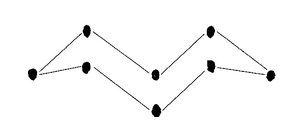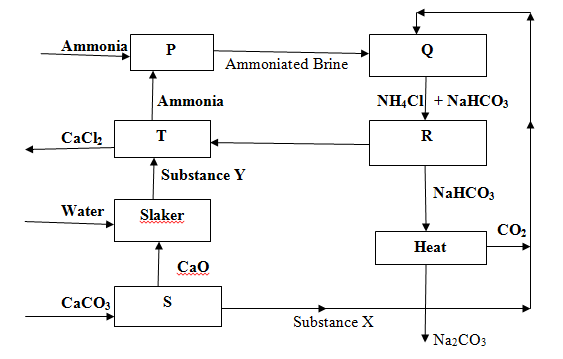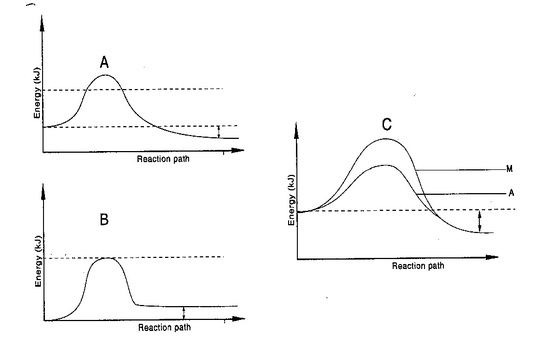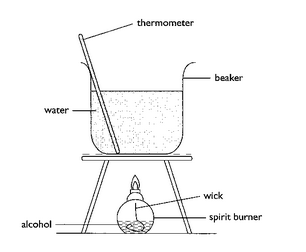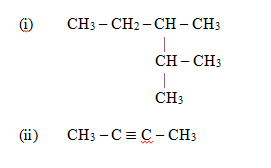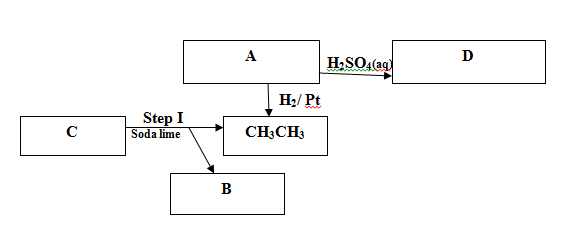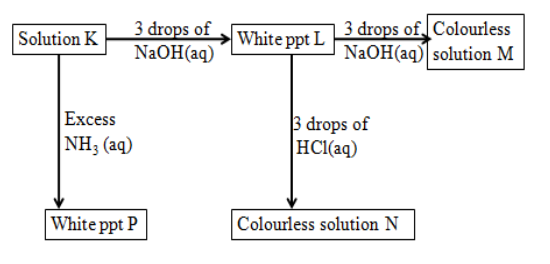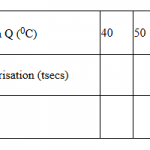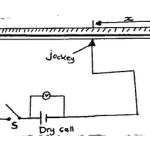KCSE Chemistry Paper 2 – Kabarak High School Mock 2015
Mock 2015 – Kabarak High School
Chemistry Paper 2
- The figure below represents a section of the periodic table. Study it and answer questions
(a) to (h). Note that the letters do not represent the actual symbols of the elements.
- Consider elements D, H and I.
(i) Give the chemical family of these elements. (1 mk)
(ii) How do their ionic size compare. (1 mk)
(iii) Compare and explain the reactivity of the three elements. (2 mks)
- (i) Write the electronic configuration of: Element H (1 mk)
(ii) The ion of element G. (1 mk)
- A molecule of one of the elements is shown below. (2 mks)
- Identify this element from the section of the periodic table and give its actual symbol and name. (2 mks)
- Explain why this element has a higher boiling point compared to that of oxygen. (2 mks)
- Write an equation to show the reaction between the element named above with oxygen. (1 mk)
- Predict the pH of the oxide of the above element when in water. (1 mk)
14 marks
Use the flow chart below to answer the questions that follow.
- Name the substances labelled: (2 mks)
i) X
ii) Y
b) Name 2 substances being recycled in the process represented by the flow chart. (2 mks)
c) Name the process that takes place in: (2 mks)
i) S
ii) R
d) Give 2 uses of calcium chloride. (1 mk)
e) Write equations for the reaction that take place in: (2 mks)
i) Q
ii) T
f) Using ionic equation explain how sodium carbonate can be used to soften hard water. (2mk)
g) Other than softening of hard water give 2 other uses of sodium carbonate. (1 mk)
12 marks
Consider this group of reaction energy profiles for some different reactions (A, B, C).
- Which reaction(s) is: (2 mks)
(i) exothermic …………………………………………
(ii) Endothermic……………
- Explain why the activation energy of A in diagram C is lower than the activation energy of M in the same diagram. (1 mk)
- In an experiment to determine the heat of combustion of methanol. CH3OH, a student set up apparatus as shown in the diagram below. Study the set up and the data and answer the questions that follow.
Volume of water = 100cm3
Final temperature of water = 22.00c
Initial temperature of water = 36.00c
Final mass of lamp an methanol = 84.75g
Initial mass of lamp and methanol = 85.10g
Density of water = 1 g/cm3
(S.H.C of water = 4.2 g-1K-1)
(i) Write an equation for the combustion of methanol. (1 mk)
(ii) Calculate:
- Number of moles of methanol used in this experiment. (1 mk)
- The heat change for this experiment. (1 mk)
- The heat of combustion per mole of methanol. (1 mk)
- Explain why the molar heat of combustion for methanol obtained above is different from the theoretical value. (1 mk)
- State two factors to consider when choosing a fuel. (1 mk)
- Outline two disadvantages of using hydrogen as a source of fuel. (1 mk)
10 marks
(a) Give the IUPAC names of the following organic compounds. (2 mks)
(b) Study the flow chart below and answer the questions that follow:
(i) Identify (2 mks)
A………………………………………
B………………………………………
C………………………………………
D………………………………………
(ii) Explain how substance A and CH3CH3 could be distinguished by burning. (1 mk)
(iii) Give one reason why soda lime is preferred to pure sodium hydroxide in step I. (1 mk)
(c) Write down the equation for the reaction between substance A and hydrogen when equal numbers of moles are used. (1 mk)
(d) A student found a bottle containing CH3CH2COO CH3.
(i) Name the process of formation of the substance above. (1 mk)
(ii) Identify the two substances from which the substance in (d) (i) is derived. (1 mk)
(e) The formulae below represents the active ingredients in a soapless detergent and in soapy detergents respectively.
(i) Give one advantage and one disadvantage of using soapless detergent. (1 mk)
(ii) Explain briefly how the soapy detergents given above may be manufactured. (2 mks)
10 marks
- (a) The flow chart below outlines some of the processes involved during extraction of copper from copper pyrites. Study it and answer the questions that follow.
- Name gas K. (1 mk)
- Write an equation for the reaction that takes place in the 1st roasting furnace. (1 mk)
- Write the formula of the cation present in the slag M. (1 mk)
- Identify gas P. (1 mk)
- What name is given to the reaction that takes place in chamber N? Give a reason for the answer. ( 2 mks)
(b) The copper obtained from chamber N is not pure. Draw a labeled diagram to show the set up you would use to refine the copper by electrolysis. (3 mks)
(c) Given that the mass of copper obtained from the above extraction was 210kg, determine the percentage purity of the ore (copper pyrites) if 810kg of it was fed to the 1st roasting furnace. (Cu = 63.5, Fe = 56, S = 32.0) (2 mks)
(d) Give 2 effects that this process could have on the environment. (2 mks)
13 marks
Study the scheme below and use it to answer the questions that follow:
(a) Write the formula of:
(i) Cation in solution K (1 mk)
(ii) White precipitate L (1 mk)
(iii) Colorless solution M (1 mk)
(iv) Colorless solution N (1 mk)
(v) White precipitate P (1 mk)
(b) Write the ionic equation for the reaction for the formation of white precipitate L. (1 mk)
(c) What property of L is illustrated in the formation of colorless solution M and N. (1 mk)
(d) Electrical conductivity decreases when temporary hard water is heated. Explain. (2 mks)
(e) When excess iron fillings were dissolved in dilute sulphuric (IV) acid, a pale green solution was obtained. The solution was filtered and divided into two portions.
(i) Write an equation for the reaction (1 mk)
(ii) To the first portion aqueous ammonia was added till in excess. State observation made. (1 mk).
(iii) Write an ionic equation for the reaction in (ii) above. (1 mk)
12 marks
a) State the Faraday’s law of electrolysis (1mk)
b) Calculate how long it would take an aqueous gold (III) chloride cell to coat 2.5 g of gold on a bracelet using a current of 2.5 A. The half reaction has been provided for you. (Au = 197) (3mks)
c) Two half-cells are connected under standard conditions to make an electrochemical cell.
The two half-cells are a copper-copper (I) ion (Cu/Cu+) and an aluminum-aluminu
- Write the cell representation for the cell obtained when the two half cells are connected. (2mks)
- Identify the reaction that takes place at the anode and at the cathode. (2mks)
- Calculate the emf for the above cell (1mk)
- Write the overall balanced redox reaction for the electrochemical cell. (1mk)
d) An excess of copper solid is dropped into a solution which contains AgNO3 , Fe (NO3)3 and Zn (NO 3)2. Write the equations for any reduction half-reactions that occur over time under standard conditions. (1mk)
11 marks

